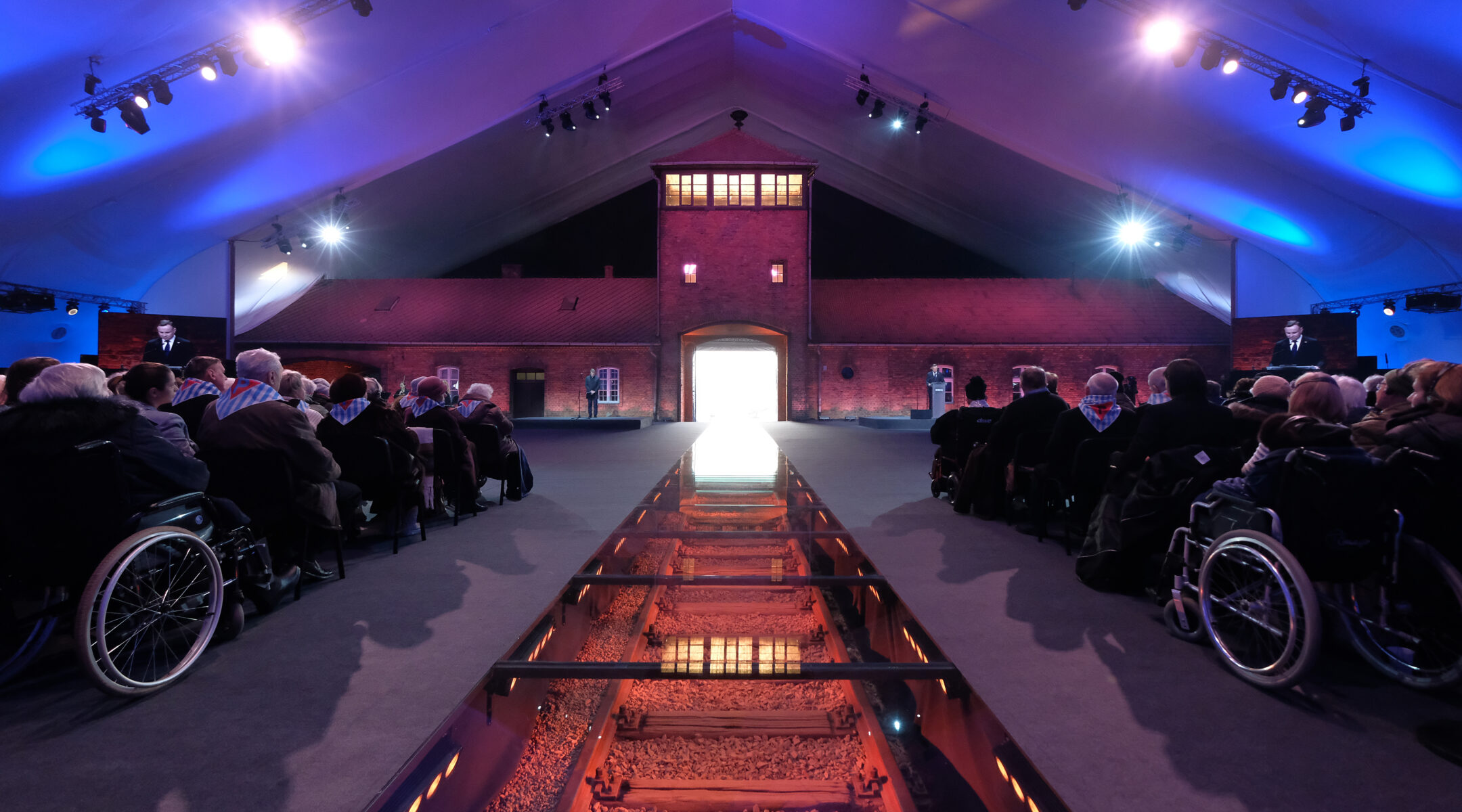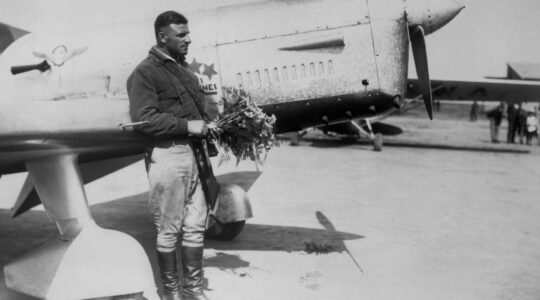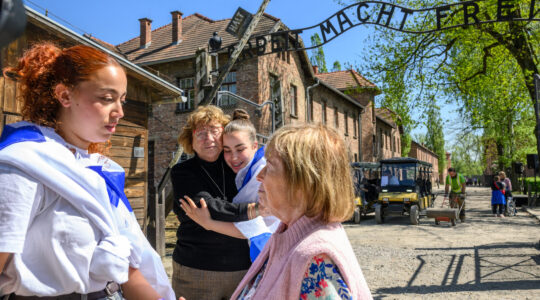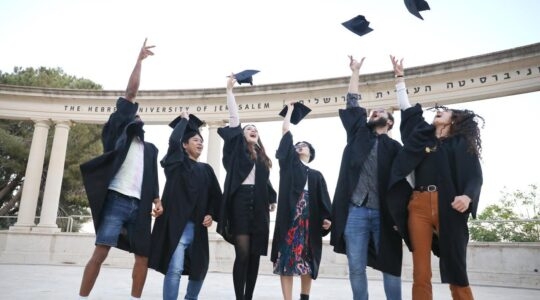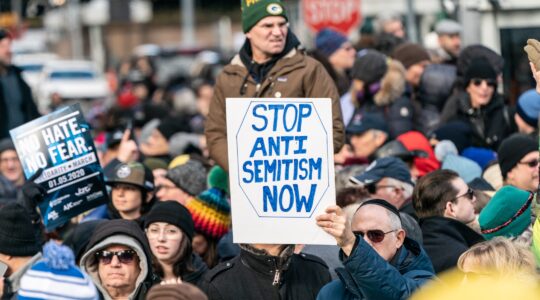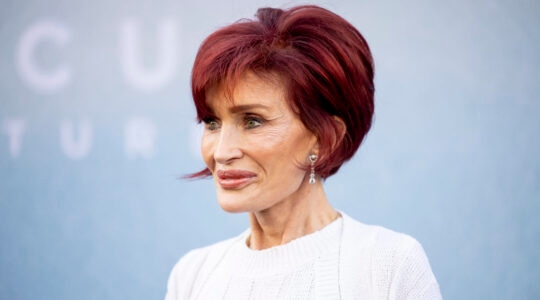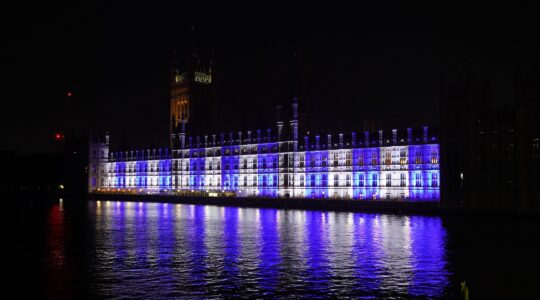Eva Szepesi, 92, is traveling this week to the Nazi concentration camp she narrowly survived, where her mother and brother were both murdered.
Szepesi, who grew up in Slovakia and now lives in Frankfurt, Germany, is one of the last survivors of Auschwitz alive today. Just 50 of them are expected to be present on Monday at the camp in Poland for a ceremony to mark the 80th anniversary of its liberation — down from 300 a decade ago and 1,000 a decade before that.
The ceremony comes amid widespread anxiety over whether knowledge about the Holocaust is diminishing as the number of Jews who survived it dwindles. For Szepesi, however, the history has lost none of its power.
“Auschwitz will stay with me until the last day, the last moment,” she said.
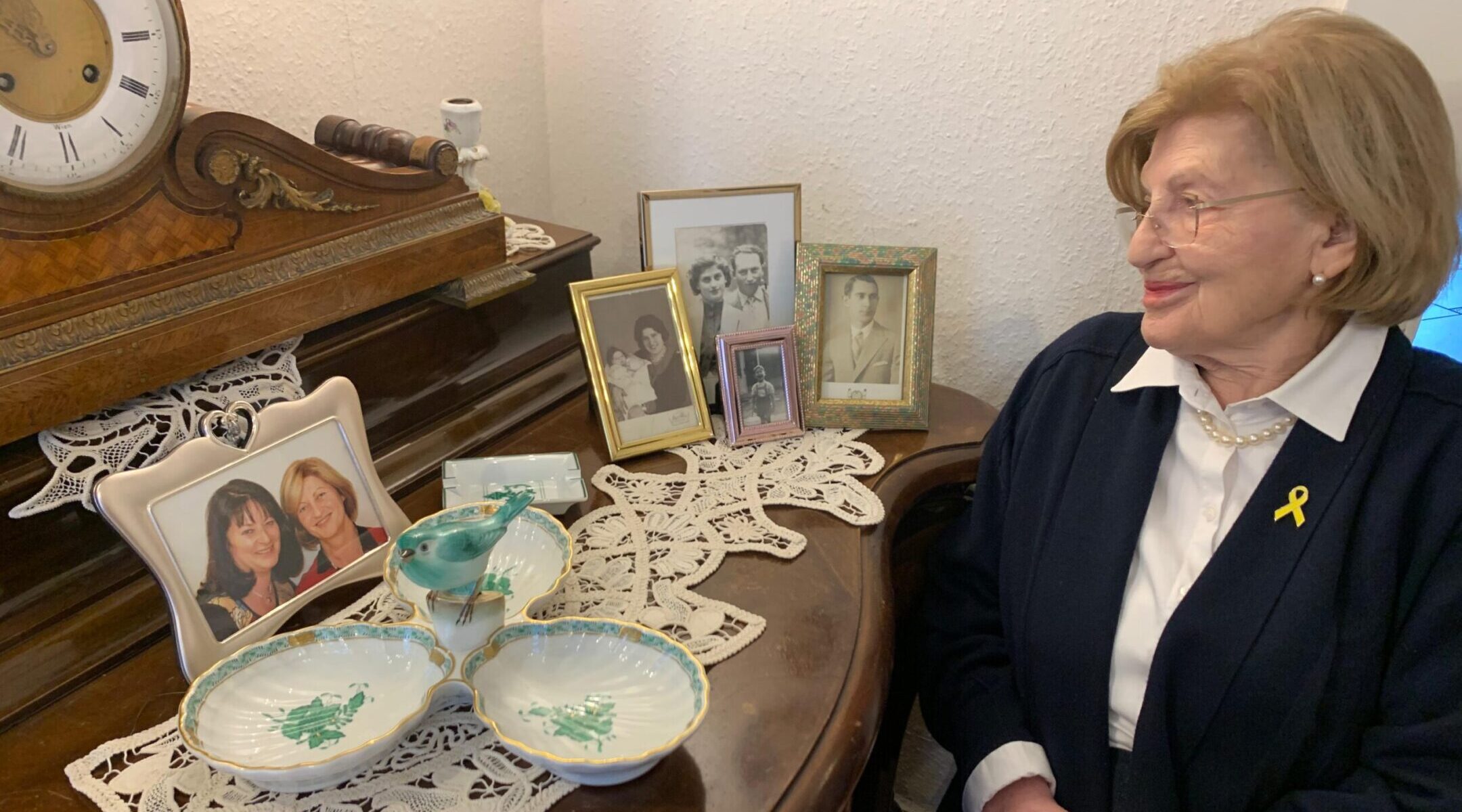
Eva Szepesi, 92, gazes at family photos in her Frankfurt home. Szepesi, 92, is a Holocaust survivor attending the ceremony marking the 80th anniversary of the liberation of Auschwitz. (Courtesy Claims Conference)
For the first time, this year’s milestone ceremony will not feature any speeches by politicians. In addition to the survivors who speak, the only other addresses will come from World Jewish Congress president Ronald S. Lauder, representing major donors to the memorial site, and historian Piotr Cywiński, director of the Auschwitz-Birkenau State Museum.
Five years ago, Poland’s president Andrzej Duda was the only politician to speak. This year, he is facing criticism over Poland’s pledge not to arrest Israeli Prime Minister Benjamin Netanyahu, for whom the International Criminal Court has issued an arrest warrant over the Gaza war, in the unlikely event that Netanyahu visits for the ceremony.
“A lot of people are tired of these speeches by officials, functionaries, politicians,” said Yves Kugelmann, the Switzerland-based editor in chief of Aufbau, a magazine started by German-speaking Jewish emigres in 1934. Its newest edition is dedicated to the subject of Auschwitz and memory, and includes contributions by survivors.
“It is important that we have the witnesses talking about what they experienced,” Kugelmann said.
When Soviet troops entered the camp on Jan. 27, 1945, they found 7,000 survivors whom the fleeing SS had left behind.
Twenty years ago, about 1,000 of them attended commemoration ceremonies at the site, in bitter cold. Now, that is the total number of Auschwitz survivors alive worldwide, according to an estimate by the Claims Conference, which negotiates restitution for survivors and recently launched a campaign featuring messages from 80 of them. (The group found last year that there were fewer than 250,000 survivors alive globally.) Most are in their 90s, and relatively few are able to make the trip.
This year’s event is “the last where we will have a visible group of survivors with us,” said Paweł Sawicki, deputy spokesman for the Auschwitz Memorial. “And this is why it is so important to put the entire spotlight on the survivors.”
“They will give the main addresses, and we will not have any politicians giving speeches,” he said, adding, “We do not want to assault this memory by [its] being politically instrumentalized.”
State representatives “will be present, but they will be listening to the voices of survivors,” Sawicki said, noting that it was survivors who in the early postwar years came up with the idea of having a memorial at the site.
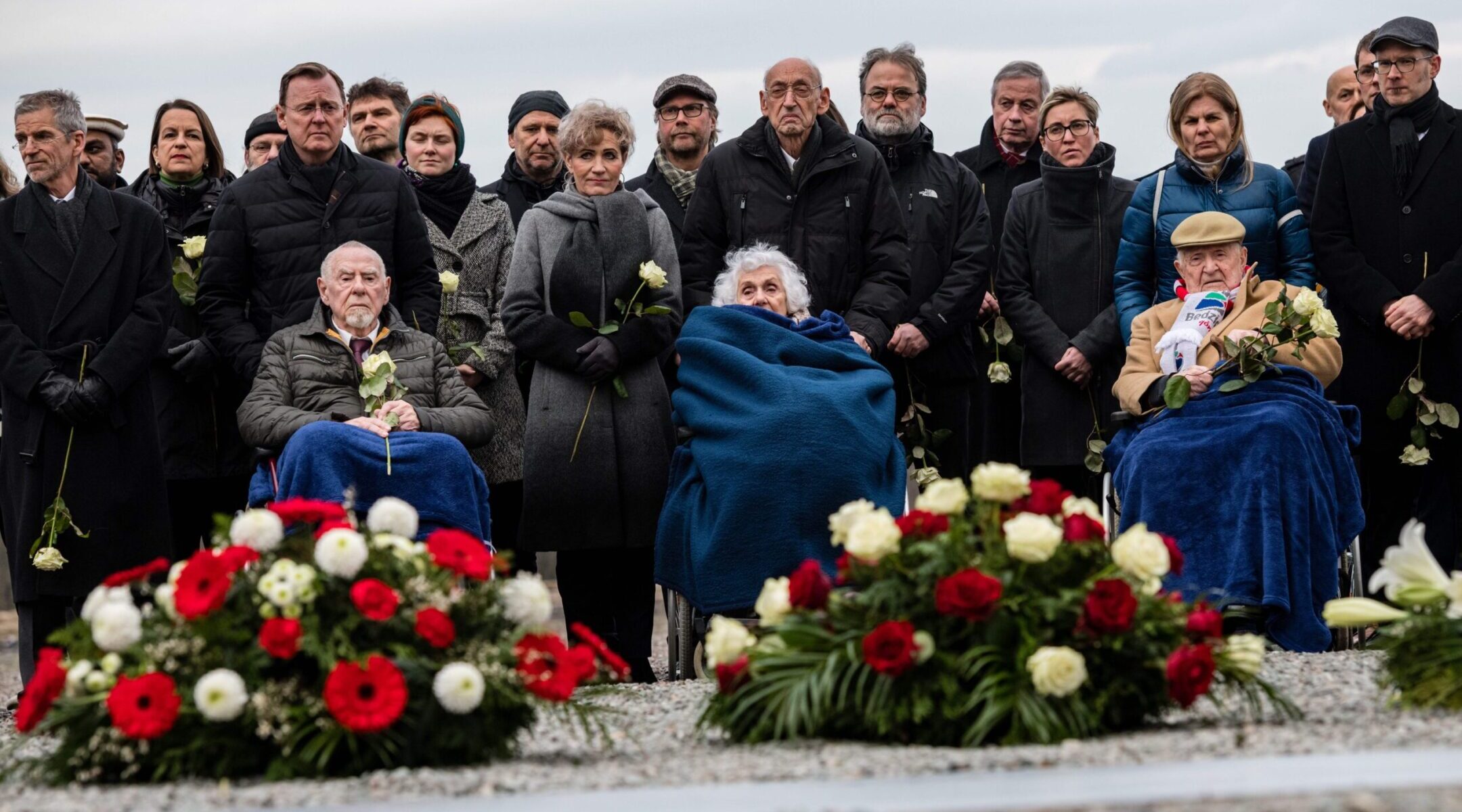
Holocaust survivors (L-R) Guenter Pappenheim, Eva Fahidi-Pusztai and Heinrich Rotmensch sit in wheelchairs at a ceremony at the Buchenwald concentration camp on Jan. 27, 2020, the 75th anniversary of the liberation of Auschwitz. All three died before the 80th anniversary. (Jens Schlueter/AFP via Getty Images)
Thousands of people are expected to be on hand for the ceremony, which marks International Holocaust Remembrance Day. (A Jewish and Israeli memorial day for the Holocaust, Yom Hashoah, falls in April.) A heated tent has been set up for participants around the infamous gate to Auschwitz-Birkenau, where, historians say, of the estimated 1.3 million people deported to the camp in Nazi-occupied Poland from 1940 to 1945, 1.1 million were murdered there; around 1 million of them were Jews.
For decades, their stories have been told by the few survivors. In the videos shared by the Claims Conference, one survivor, Alfred Sobotka, shares a photo from his bar mitzvah, and points to his father and brother, both gassed on arrival at Auschwitz.
Another, Alice Ginsburg, recalls “the heart-wrenching experience of being separated from my family” forever.
In just a few words, each of them paints a universe lost.
Szepesi, who also appears in a video, was the only survivor from her immediate family. She was only 12 when she was deported to Auschwitz in November 1944, several months after her family had sent her alone into hiding with relatives in Slovakia.
Very few children arriving at Auschwitz survived. She was selected for work, cleaning ammunition. She clung to the hope of being reunited with her family. Liberation came; she later returned to Budapest, where she met her husband, a fellow survivor named Andor Szepesi. They married in 1951, started a family and eventually applied for asylum in what was then West Germany, moving there in 1954.
Eva Szepesi first went back to the site for the commemoration in 1995, convinced by her daughters Judith and Anita. After the ceremony she spoke with students for the first time; they sat cross-legged on the floor in her hotel and listened, rapt.
“I just started and it all bubbled up,” she recalled. Since that time, she has spoken with numerous school groups, particularly in Germany.
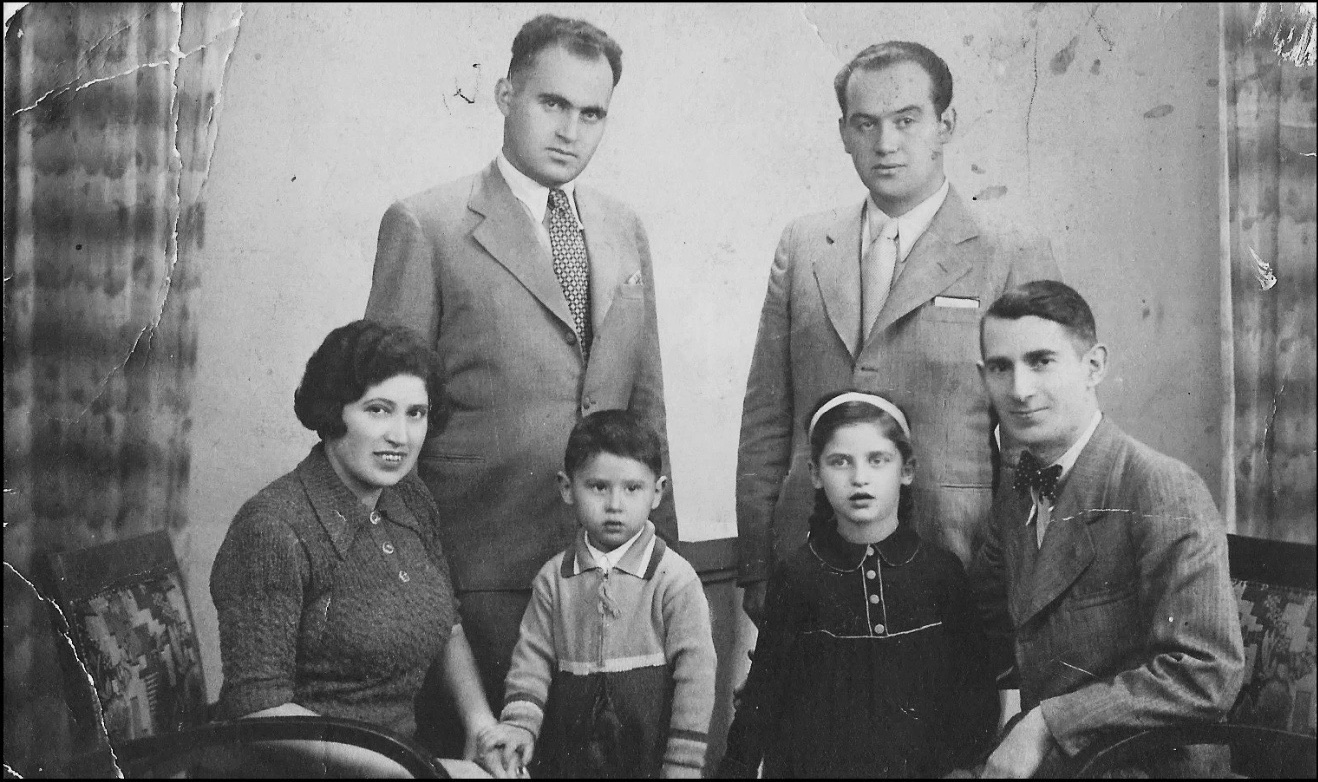
Eva Szepesi as a child with her family before the Holocaust, in one of the only photos she has of her murdered family. (Courtesy Szepesi)
“I start with my happy childhood, which was very short” but had a lasting impact, she said. “I received a lot of love.”
She tells them “that when they experience injustice, they should stand up and not remain silent; they should get informed, not believe everything straight away. And you have to be careful that something like that never happens again,” she said, adding that listeners “always tell me, we will be the witnesses of the survivors when they are no longer here; we will pass it on.”
In 2016, she finally learned the fates of her parents and brother. Her granddaughter researched at the Auschwitz archive and found Szepesi’s mother, Valeria Diamant, on a list of murdered Jews.
“I was so scared,” recalled Szepesi, who had accompanied her granddaughter to the archive. As if in a dream, “I saw my mother’s name with my own eyes.” She scanned the list and found her brother’s name, Tamás Diamant, as well.
She had waited 70 years, hoping her mother would come for her. It turned out she had been murdered shortly before Eva arrived at the camp.
“It’s always a terrible thought for me, that she saw from above that her little daughter marched in, into Birkenau, Auschwitz-Birkenau,” she said.
All Eva Szepesi has from her childhood, aside from memories, is a handful of photos that a neighbor had hidden and handed to her uncle, wrapped in a newspaper, after the war. Szepesi looks at them every day, and even sometimes speaks with them.
The shattering knowledge about what happened to her family brought some closure. But she still asks herself: “My little brother was four years younger, and he was murdered. Why am I allowed to live, and he had to die? But I don’t get an answer.”
Educators and Jewish organizations have been working to devise strategies for teaching about the Holocaust when the last survivors with memory of the Holocaust can no longer tell their stories — a prospect that grows nearer by the day. Virtual and augmented reality is increasingly playing a role, as are the children and grandchildren of survivors.
On Monday, Szepesi will be a guest of the World Jewish Congress, accompanied by her younger daughter, Anita Schwarz.
The return to Auschwitz is “like going to visit my grandmother. That is where I actually felt her presence for the first time,” Schwarz said.
“There are so many young people today who don’t know what Auschwitz is, who can’t relate to it at all,” Schwarz added. “Only when you really come to terms with history, and actually with your own family history, can you understand what it means and that you really have to do something, so it doesn’t happen again.”
JTA has documented Jewish history in real-time for over a century. Keep our journalism strong by joining us in supporting independent, award-winning reporting.
